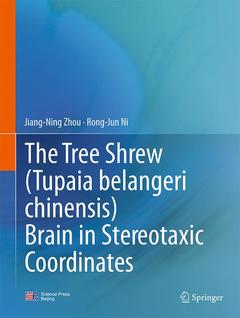Description
The Tree Shrew (Tupaia belangeri chinensis) Brain in Stereotaxic Coordinates, Softcover reprint of the original 1st ed. 2016
Language: English
Subjects for The Tree Shrew (Tupaia belangeri chinensis) Brain in...:
Keywords
Neuroscience; Anatomy; Tree shrew; Brain structure; Atlas; Stereotaxic Coordinates
Publication date: 11-2016
Support: Print on demand
Publication date: 06-2018
Support: Print on demand
Description
/li>Contents
/li>Biography
/li>Comment
/li>
This atlas is currently the most systematic and comprehensive atlas of the tree shrew brain. The purpose of this book is to help scientists acquire accurate coordinates of the brain regions of the tree shrew, which is becoming a popular animal model for a variety of human diseases. This atlas contains series of 192 coronal sections, 36 sagittal sections, and 49 horizontal sections using Nissl staining or acetylcholinesterase histochemistry as well as a series of diagrams in stereotaxic coordinates. Original photomicrographs are obtained at single-cell resolution. In addition, we also referred to magnetic resonance images acquired at 250 um intervals with a magnetic resonance scanner 9.4T. Many brain structures are first identified in tree shrews and accurately presented in a stereotaxic coordinate system. The Bregma coordinates system is used for the first time in this tree shrew brain atlas. The atlas represents the collaboration between two indispensable skills of brain research, neuroanatomy and stereotaxic surgery. It will be extensively used in neuroscience research, particularly tree shrew brain study, and will help graduate students and researchers understand brain anatomy and acquire accurate reference coordinates.




